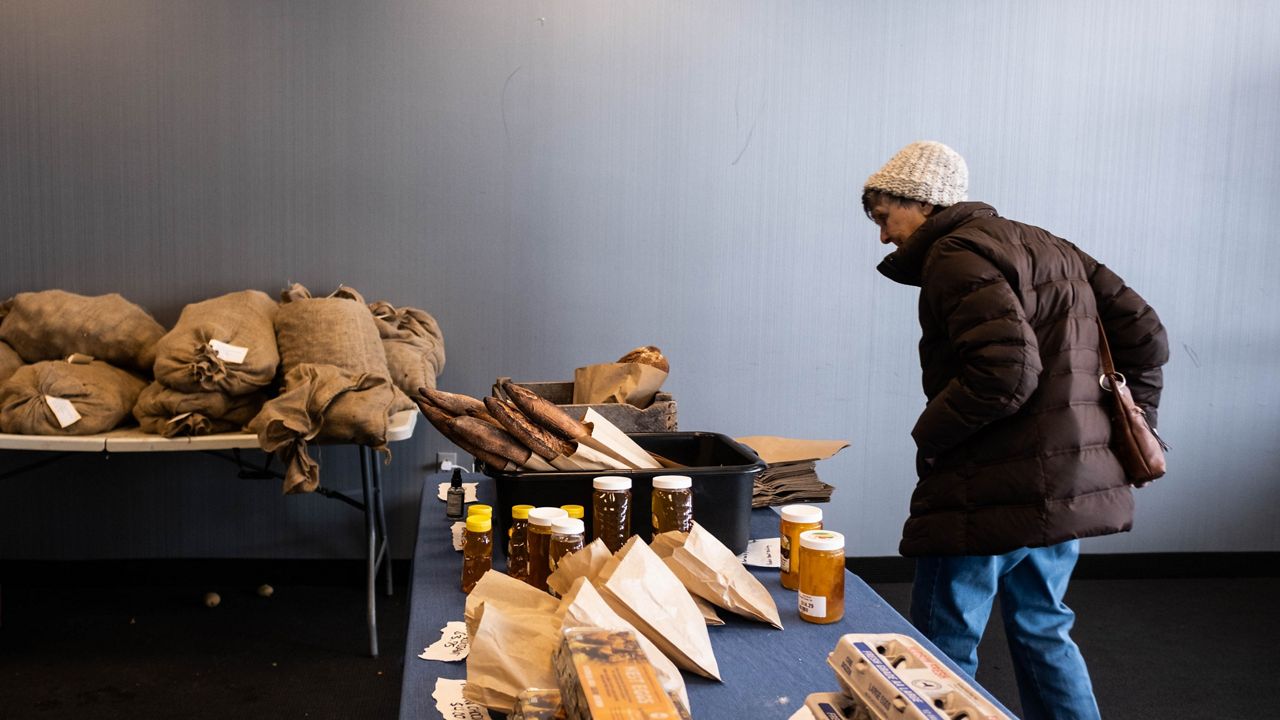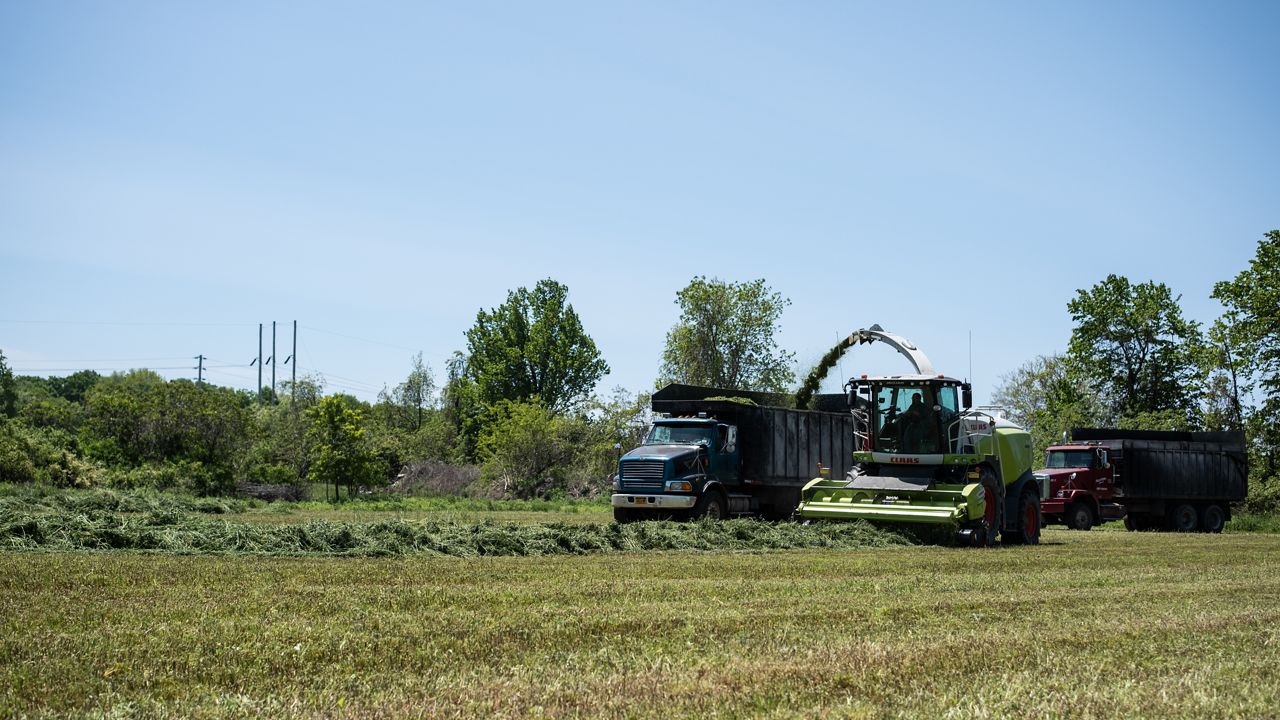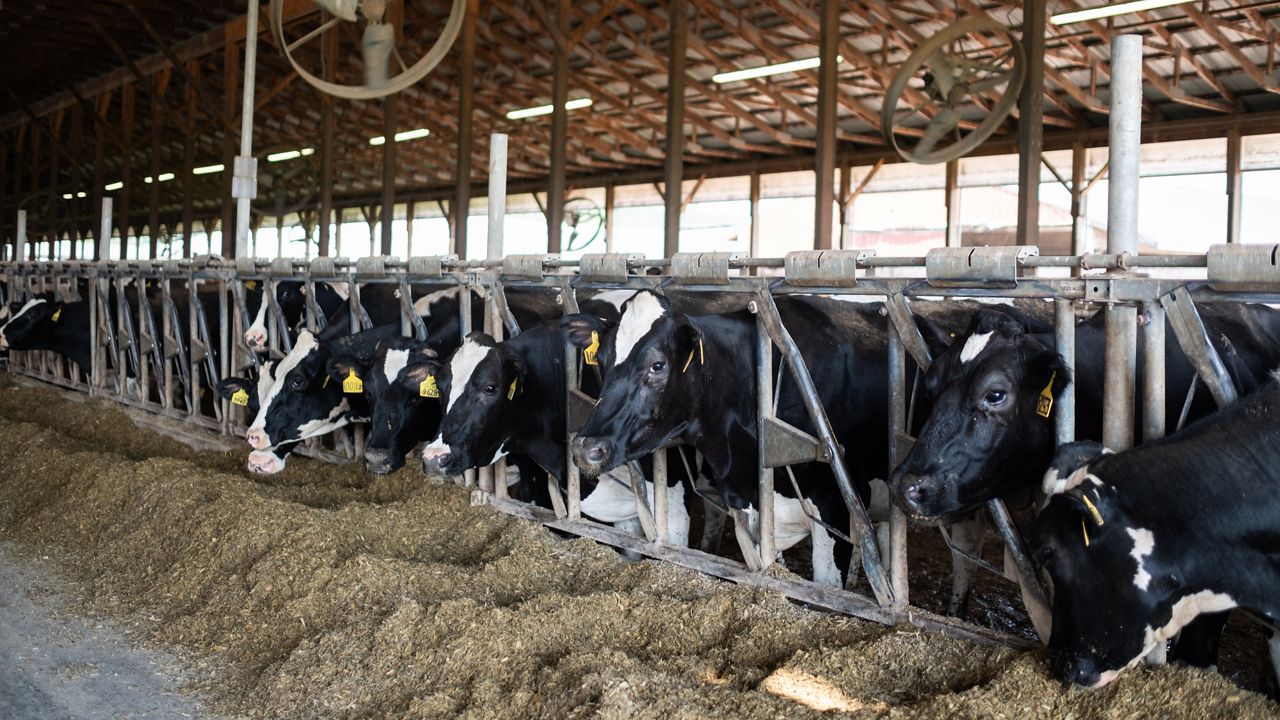With an expected population increase in Onondaga County over the next decade, concerns about food access are on the rise, but experts say the influx could also bring new hope.
“It is a very important and super complex conversation. There is no one person who is an expert in how all these things are going to unfold and so we have to bring our collective expertise to the table so we can begin to disentangle these issues,” said Maura Ackerman, executive director for Syracuse-Onondaga Food Systems Alliance.
As of 2021, 46,220 people out of approximately 470,000 people living in Onondaga County are food insecure, according to data from Feeding America, a national network of food banks. Food insecurity is defined by the USDA as the lack of access to enough food to live an active and healthy life.
And the population of the county is predicted to rise with chip manufacturer Micron’s plans to hire for 9,000, and with local officials reporting the project will create 48,000 jobs in the area. Some will be filled by workers in Central New York, but leaders also are anticipating a jump in population as Micron begins its phased project over the next 20 years.
That increase has some advocates worried about a negative impact on food insecurity in Syracuse.
“You can’t come and fix a flood that’s already overflowing in a short period of time. It’s not going to happen like that,” said Rhonda Vesey, chairperson of Food Access Healthy Neighborhoods Now in Syracuse.
In addition to Micron, Vesey has concerns about how the changes to I-81 will impact the Valley neighborhood as many residents currently have to leave the neighborhood to purchase groceries.
“I’m hoping with the highway coming down right behind us that there’s some structure we’re about to see happen with the bus lines,” Vesey said.
Owen Kearney, a city planner for Syracuse, said they are working closely with the state Department of Transportation to mitigate any potential impacts on the city.
“The mayor and the deputy mayor have hired one coordinator specifically to focus and liaison with New York state on this once-in-a-generation project that includes access, land use, public safety, and the design of the new infrastructure,” Kearney said.
Jonnell Robinson, a professor in the geography and environment department at Syracuse University, said Onondaga County has struggled with food insecurity for a long time.
“We’ve had grocery store abandonment from our city centers and a variety of food initiatives that have started and stalled out, so we do continue to struggle with food insecurity among families, elders and across the population on all demographics,” Robinson said.
There are certain geographic areas known for food insecurity, but it can be found throughout the entire city, Robinson said.
“Food insecurity is pretty ubiquitous throughout the entire city. There are pockets of low-income households dispersed throughout the city,” she said.
Robinson said a growing population could lead to new demand for more grocery stores.
“An influx of population may re-incentivize grocers to repopulate brick and mortar grocery stores within the city or surrounding areas,” she said.
The areas where there is a lack of grocery stores include the Valley neighborhood, the Southside and Near West Side, while Micron will be built in Clay, north of the city. “I think there certainly will be demand on the food system, but what and where they will choose to eat is a different question. I think there will be an increased demand and certainly locally to the Clay area itself,” Ackerman said.
The question becomes where new residents will choose to live, Ackerman said.
“It sort of depends on a lot of factors with regard to where people actually wind -up living and what their day-to-day travel is like between home and work,” she said.
Ackerman said the other concern related to attracting workers is rising housing costs in Central New York.
“If housing increases, that puts a strain on family's food budgets. Likewise, the emergency food system is under an immense amount of strain already and so t here’s not a whole lot more that the emergency food system can do to make up that shortfall,” Ackerman said.
One recommendation Robinson had for Onondaga County and Micron would be to increase the food processing and procurement done locally. There is limited infrastructure to meet the current demand, and Micron will only increase the demand, she said.
“Thinking about how we can support the infrastructure to get minimally processed foods, for example, freezing peas and carrots for consumption during the winter months or supporting the ability to aggregate and distribute food will be important as we prepare for Micron’s arrival,” Robinson said.
Micron has said they have a $500 million community fund that they intend to use to help mitigate local issues as they move in.
“I think that there are lots of different opportunities for investment. I think that clearly the Valley Plaza is one that makes a lot of sense,” Ackerman said.
Additionally, investing in ways to distribute local food would be helpful.
“How do we do season extension both in terms of how we grow but also how we package and store food here? How do we increase access for local meats and make that easier for folks,” Ackerman said. “I think there’s a lot of opportunity for what is sometimes called the middle of the food system from Micron.”









